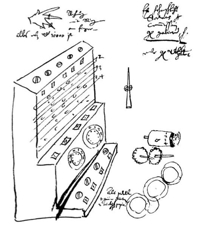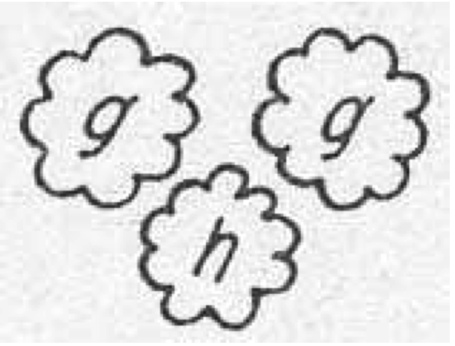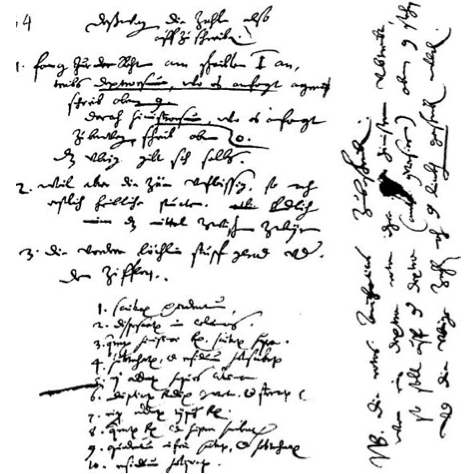Translation of the key paragraphs in Kepler’s letters is provided in an elegant article on “The Rechenuhr (Calculating Clock) of Wilhelm Schickard” available at http://history-computer.com/MechanicalCalculators/Pioneers/Schickard.html. These are replicated (with some suggested modifications by JF - in square brackets) below:
The first letter by Wilhelm Schickard to Kepler in Linz, 20. September, 1623:
…Porro quod tu logistice, idem ego mechanice nuper tentavi, et machinam extruxi, undecim integris et sex mutilatis rotulis constantem, quae datos numeros statim άώτομάτος computet, addat, subtrahat, multiplicet, dividatque. Rideres clare, si praesens cerneres, quomodo sinistros denarium, vel centenarium supergressos, sua sponte coacervet, aut inter subtrahendum ab eis aliquid suffuretur…
In english —I have tried to discover a mechanical way for performing calculations, which you have done manually till now. I constructed a machine, which includes eleven full and six partial [“mutilated” J.F.] pinion-wheels, which can calculate automatically, to add, subtract, multiply and divide. You would rest satisfied, if you can see how the machine accumulates and shifts to the left tens and hundreds, and makes the opposite shift during a subtraction….
[Note that you can have various possible translations of this latin text, including of “Rideres clare” with it often rendered as: “You would burst out laughing” whilst here it is more moderately phrased as “You would rest satisfied”. As always, the overall meaning is what is most important to convey. JF.]

Sketch by Schickard of his Machine1
The second letter is dated February 25th, 1624, and includes a description of the machine with two drawings and bad news about a fire, which destroyed the machine:
…Arithmeticum organum alias delineabo accuratius, nunc et festinate hoc habe, aaa sunt capitella cylindrorum erectorum, quibus multiplicationes digitorum inscriptae, et prominent, quantum ijs opus est, per fenestellas bbb ductiles, ddd intus habent affixas rotulas 10 dentium, sic contextas, vt mota qualibet dextra decies, proxima sinistra semel; aut illâ 100 vicibus circumactâ, tertia semel etc. promoveatur. Et quidem in eandem partem; quod vt praestarem, intermediâ consimilj h opus fuit.
(A marginal note) Quaelibet intermedia omnes sinistras movet, debitâ proportione; nullam verò dextram, quod singularj cauitione indiguit. (End of the note)
In english—…I will describe the arithmetical machine more precisely some other time, now I don’t have enough time: aaa are the upper faces of vertical cylinders, whose side surfaces are inscribed with multiplication tables. The digits of these tables can be looked out of the windows bbb of a sliding plate. From the inner side of the machine to the disks ddd are attached wheels with 10 cogs, and each wheel is clutched with a similar wheel in a manner that, provided some of the right wheels spins round ten revolutions, the left wheel will make one revolution, or provided the first wheel spins round 100 revolutions, the third wheel to the left will make one revolution. In order [for] the revolutions of the wheels to be in the same direction, intermediate wheels h are necessary. [See the following sketch].
[A marginal note] Each intermediate wheel moves to the left [when a carry is required], but not to the right, which [makes] special caution[ary] measures necessary. [End of the note].
A second paragraph reads: Quotus eorum prominet per foramina ccc in scamno medio, tandem in pavimento inferiori e vertebras et f similiter foramina pro apparitione numerorum notat, quibus inter operandum usus est. Sed ista sic tumultuariè scribi nequeunt, facilius ex autopsiâ cognoscentur. Et curaveram tibi jam exemplar confieri apud John Pfisterum nostratem, sed illud semiperfectum, vna cum alijs quibusdam meis, praecipuè aliquot tabellis aeneis conflagravit ante triduum, in incendio noctu et ex improsivo ibj coorto, quod Mütschlinus referre amplius sciet. Harum jacturam admodum aegre fero, praesertum nunc quando non vacat alia reficere tam cito.
In english— The digits, inscribed upon the each wheel, can be looked [at through] the windows ccc of the middle bank. In the end of the lower bank are arranged rotating heads eee, used for recording of numbers, which are the result of the calculations, and their digits can be looked [at] out of the windows fff. [But this is a hastily written, and can not easily understood unless seen.] I have already [placed an order] for a copy for you to our Johann Pfister, together with some other things for me, especially some copper plates, but when the work was half finished, yesterday night a fire burst out and everything burnt out, as Maestlin informed you. I take this loss very heavily, because there is no time for its replacement.

Sketch by Schickard of the mechanics of his machine in 16242

Small sketch by Schickard of the mechanics of his machine in 1624.3

Note by Schickard to artisans building his machine4
Schickard obviously dissatisfied with the work of the artisan, involved in the production of the device, notes (in Old German):
Rechen Uhr betreffs. 1. Die zän seind gar vngleich und vnfleißig…
Concerning Calculating Clock, 1. The teeth are unequally made and don’t work…5
1 found by Dr Hamer in the Württembergischen Landesbibliothek (↑)
2 Max Caspar, in his research into the Kepler archives in the Pulkovo Observatory (near St Petersburg, Russia) found a slip of paper in Kepler’s Rudolphine Tables which appeared to have been used as a book mark, but containing Schickard’s original drawings for his “Calculating Clock” in a letter to Kepler. Somewhat after Dr Franz Hammer whilst carrying out research in the Württembergischen Landesbibliothek (Stuttgart, Germany) found a sketch of the machine (the second sketch reproduced here) together with notes to artisans on building the machine. (↑)
3 From http://history-computer.com/MechanicalCalculators/Pioneers/Schickard.html, viewed 6 April 2014. (↑)
4 found by Dr Hamer in the Württembergischen Landesbibliothek (↑)
5 as noted in the text, this was kindly translated by Mr Stephan Weiss, www.mechrech.info (↑)
Pages linked to this page
 This work by Jim Falk is licensed under a Creative Commons Attribution-NonCommercial-NoDerivs 3.0 Unported License Click on the logo to the left to see the terms on which you can use it.
This work by Jim Falk is licensed under a Creative Commons Attribution-NonCommercial-NoDerivs 3.0 Unported License Click on the logo to the left to see the terms on which you can use it.